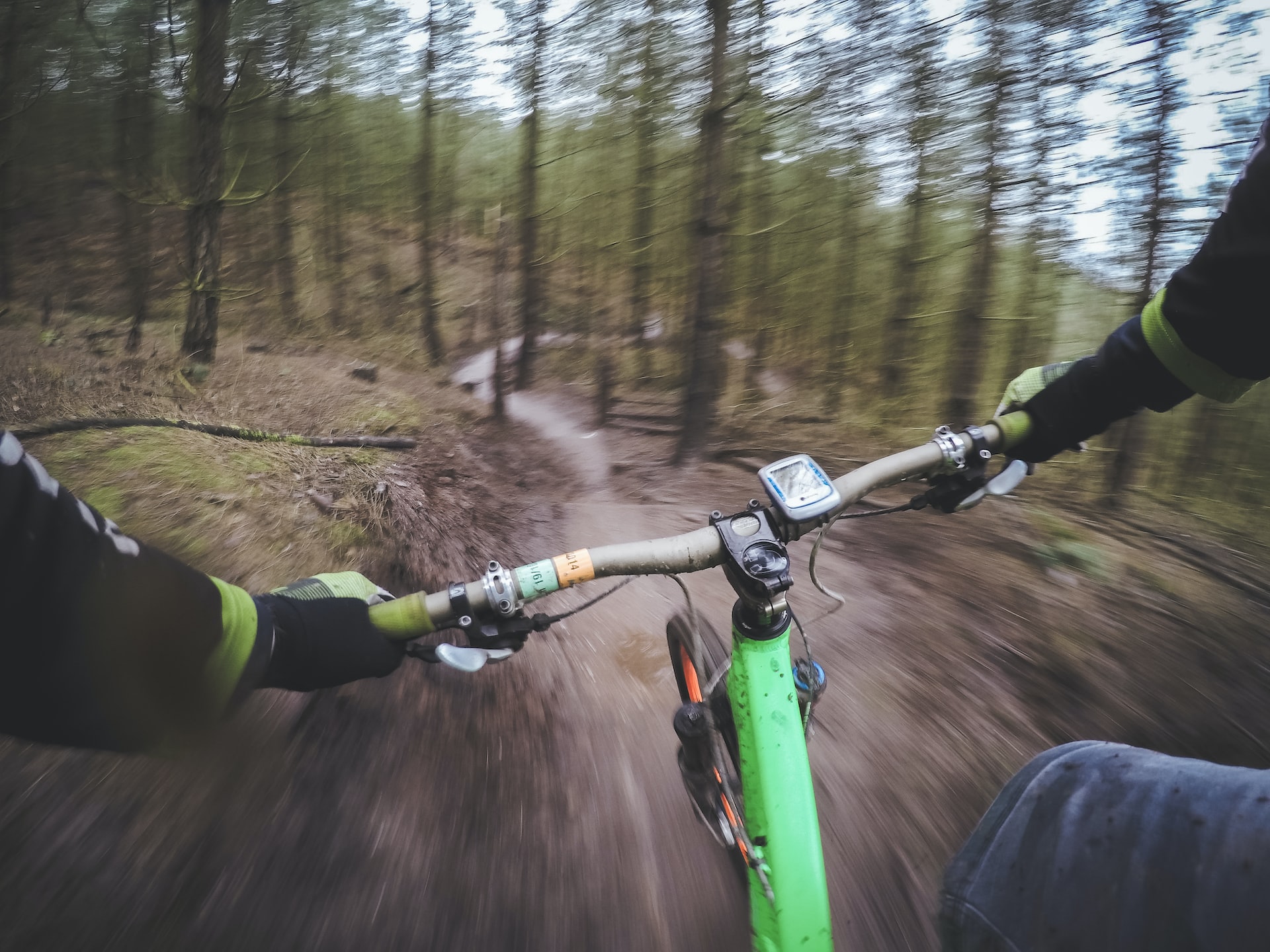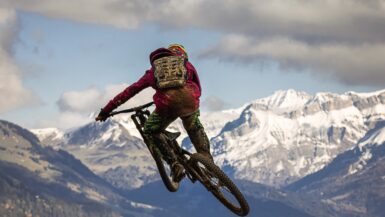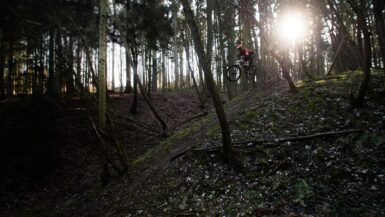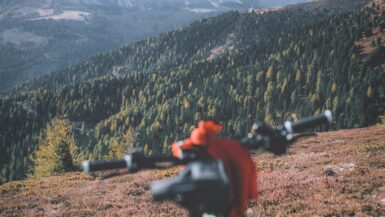Are you looking for a challenge and some excitement? If so, mountain biking on technical trails may be your desired activity. Technical trails with steep descents and climbs, tight turns, obstacles, and other features make them the most valuable for experienced and advanced riders. Riding these trails can be intimidating for some, but the thrill of conquering obstacles and mastering technical tracks makes it worthwhile. This article will explain the basics of how to ride technical mountain bike trails so you can be well-prepared and get the most out of your ride.
Planning and Prepping
It pays to have the right gear when riding a mountain bike on technical trails. At a minimum, you should be sure to have a good mountain bike, a helmet, gloves, and sturdy shoes. For more challenging courses, you may need additional protective gear, such as elbow and kneepads. You’ll also want to make sure you have the necessary tools and supplies to fix any mechanical issues that may arise.
Doing a Pre-Ride Check
Before you hit the trails, there are a few things you’ll want to check first. Take your bike for a spin around your neighborhood or a nearby park and look for any signs of wear and tear. Test that your brakes work and ensure all the bolts are correctly tightened. Additionally, check your tire pressure and bring a patch kit in an emergency.
Familiarizing Yourself with the Trails
Familiarity with the trails you plan to ride is vital. Research the routes you plan to take, analyzing the route profile, technical features, and distance. Read reviews and talk to other riders who have completed the trail. This will help you to know what to expect and give you an idea of how challenging the course is.
Studying Up on the Basics
It would help if you brushed up on the basics as a beginner mountain biker. Take the time to understand the fundamentals of bike handling and practice essential skills. This includes learning how to effectively use your brakes, shifting gears, navigating turns, and bunny hopping.
Practicing Good Trail Etiquette
It’s essential to learn proper trail etiquette before riding technical trails. This includes yielding to other trail users, respecting wildlife and private property, and following local laws and regulations. Additionally, pack out any food waste and leave no trace.
Getting Mentally Prepared
Mountain biking can be mentally as well as physically demanding. Be sure to research and mentally prepare yourself for the challenges you may face on the trail. Visualise yourself navigating the terrain safely and successfully, and remind yourself that you can always turn around if necessary.
Familiarizing Yourself with the Trail
Before embarking on a mountain bike ride on technical trails, it’s essential to be prepared. Before riding, check the bike for proper tire pressure and familiarize yourself with the track. Make sure to bring the right supplies, such as extra food and water, a first aid kit, and appropriate clothing for the conditions.
Studying the Trail
Familiarize yourself with the trail before you ride. If maps or signage are available, look over them to get an idea of the terrain and what it entails. Please pay special attention to any steep ascents or declines, as they can take more energy and require finesse to navigate. If you have friends or family that have ridden the trail before, it’s a good idea to get their advice and tips on the best route and what to be aware of.
Gauging Your Fitness Level
Before you ride, gauge your fitness level to determine how far and fast you can go. If you are a beginner, it’s best to start by riding on more accessible trails with shorter distances and lighter terrain. As your fitness improves and you become more comfortable with the track, you can challenge yourself with more difficult technical courses or go further.
Practicing Safety Measures
Safety should always be the priority when mountain biking on technical trails. Make sure you know your surroundings and the course’s potential danger. Bring a cell phone in case of emergency, but remember to be mindful of the noise and be respectful of the environment.
Body and Bike Positioning
Before attempting a technical ride, getting familiar with the trail is crucial. Look for the best line to take on the route based on the terrain and any obstacles you may encounter. This will help you anticipate what to expect and plan how to maneuver your bike.
Bike Setup for Technical Trails
When riding technical trails, it is essential to ensure your bike is correctly set up to maximize control. Increasing the tire pressure can help improve grip and steering. Lowering the seat and handlebar height can help you stay in a stable, powerful position as you ride.
Body and Bike Positioning on Technical Trails
Developing good riding habits is critical to successfully riding technical trails. For starters, stay relaxed and keep your core and arms engaged. Hunching over your handlebars can put you in a compromising position if you encounter any unexpected obstacles. Your weight should be balanced over your bike, and your feet should remain flat on your pedals.
Using the proper body positioning on a bike can also help you take corners and navigate tight spots with more control. When turning, focus on keeping your eyes up and looking ahead to where you want to go. For a tight corner, lean your body towards the inside of the corner while also lifting your inside pedal. This will keep you balanced, help you stay in control, and prevent the front wheel from slipping out.
Staying in Control Through Technical Sections
To stay in control during technical sections, maintain a consistent speed. When encountering an unexpected obstacle, it is essential to remain relaxed and not panic. If you’re unsure what to do, try to roll over the block if possible rather than attempting to bunny hop it.
Proper braking can also help you stay in control and avoid skidding. Start braking early and apply light, consistent pressure to your brakes. This will help keep your momentum in check and prevent you from losing control.
When riding technical terrain, it is also essential to be aware of the other trail users. Be respectful of other bikers and hikers you may come across, and remember to always stay in control.
Braking
Mountain biking on technical trails requires you to be skilled in using your brakes. Braking is one of the essential techniques for riding a mountain bike, especially when riding downhill. Improper braking can cause you to crash and injure yourself.
Fortunately, there are some techniques that you can use to improve your mountain biking braking skills.
Front vs. Rear Braking
One technique to remember when braking on a mountain bike is the importance of front vs. rear braking. It would help if you always began braking with the rear brake and then gradually applied the front brake. This increases your braking power, as the rear brake provides strength and the front brake offers stability. It would be best to practice using both brakes together for sudden stops.
Where to Place Your Feet While Braking
When using your brakes, knowing where to place your feet is crucial. As you brake, move your feet slightly outwards and spread them wider apart. This will help you stay balanced on your bike.
Tips for Braking on Descents
When braking on a descent, you should use a feathering technique. This means that you should use small, short braking strokes to help you maintain your speed and control. Applying too much pressure could cause your tires to skid, resulting in a loss of control.
Maintaining Braking Efficiency
Finally, it is vital to maintain the efficiency of your brakes. This can be done by regularly cleaning your bike and checking that your brakes are in good working order. This will help ensure that your brakes respond quickly and effectively when you need to brake.
By understanding and practicing the above techniques, you can become a better mountain biker and improve your braking skills. With practice and the correct approach, you can confidently and safely enjoy the thrills of mountain biking on technical trails.
Cornering
Mountain biking on technical trails requires riders to maintain proper balance and body positioning for effective cornering.
When entering a corner, lean slightly inwards to counteract the centrifugal force and keep your bike upright. Keeping your body weight on the outside pedal will help to keep the cycle balanced and help you to corner smoothly.
Look Ahead
When cornering on technical trails, it’s essential to look ahead. This can help you anticipate the terrain and adjust your riding style. It would be best if you always looked around the bend to plan your line and ensure you can take the corner safely.
Brake Before Entering the Turn
Applying the brakes before entering a corner will help you maintain control as you go through it. You should use the brakes gradually and progressively to adjust your speed to the terrain. It’s also essential to keep your weight on the outside pedal when cornering to maintain balance.
Pedal Through the Turn
Once you have entered the turn, you should pedal steadily through the bend. This will help to keep your speed consistent and help you to maintain control throughout the corner. You should avoid slamming on the brakes or accelerating too quickly, as this can cause you to lose control of the bike.
Practice Cornering
To become a better mountain bike rider on technical trails, it’s vital to practice cornering. It would help if you tried to ride different tracks, as this will help you to become familiar with diverse terrain and improve your cornering skills. With enough practice and experience, you’ll be ready to take on the most challenging trails.
Climbing and Descending
To be successful, riding mountain bikes on technical trails requires a unique set of skills and techniques. Climbing and descending are two specialized riding techniques every mountain biker should master. Knowing how to climb and descend efficiently will make a more enjoyable ride.
Climbing with Ease
When climbing on technical trails, it’s essential to maintain the correct momentum. Finding the best line up the hill and keeping your body low will help conserve energy and create an easier path. Picking the right gear is also crucial, as it allows you to maintain a steady cadence while climbing. You also want to keep your weight centered over the bike and utilize your body weight to help push your bike up the hill.
Descending with Confidence
Descending on tricky terrain requires a bit more practice and skill. The key to safely navigating rocky downhill trails is to keep your speed in check and maintain control of your bike. It’s essential to use your brakes judiciously and to keep your eyes up to stay aware of any potential hazards. Minor adjustments to your body and weight can help you stay balanced and in control. Utilizing your momentum while shifting your body weight can help you stay on track.
Practicing your Technique
The best way to learn and improve your technical riding skills is to practice. Start by focusing on one technique at a time and build up your confidence and skills before progressing to more challenging trails. Make sure to find a safe place to practice and take it slow. With time and dedication, you will be well on your way to mastering mountain bike riding on technical trails.
Navigating Difficult Technical Terrain
Mountain biking on technical trails can be a thrilling experience and challenging with many obstacles. One of the most critical skills for a mountain biker is navigating rugged terrain, such as steep and uneven grounds. Here are some tips for maintaining momentum on uneven ground.
Using Speed to Your Advantage
When tackling an obstacle such as an uphill, it is crucial to use the power of speed. Before reaching the block, it is wise to build some rate to gain momentum and make the climb easier. This is especially true for steep ascents.
Adjusting the Ride Position
Low and relaxed are the best riding positions to take on steep and uneven terrain. To achieve this, riders should lower their bodies closer to the bike’s center of gravity. The arms should be slightly bent, allowing the rider to absorb any bumps they may encounter while also allowing them to keep the handlebars in line with the direction of travel.
Making Use of Your Brakes
Having complete control of the bike is essential when tackling rugged terrain. To do this, it is vital to use both the front and the rear brakes. By evenly distributing the braking power across both brakes, the rider will have more control of the bike and can easily navigate uneven ground.
Getting Low and Looking Ahead
When approaching a difficult obstacle, it is crucial to get as low as possible, put your head down, and focus your gaze on the direction you want to go. This will help you to maintain control of the bike and keep your eyes focused on the tip of travel. Additionally, it is vital to keep your arms and legs loose to absorb the shock of any bumps or unevenness you may encounter on the trail.
Practice Makes Perfect
Navigating rugged terrain can take some time to master, but with some practice and perseverance, it can become second nature. To get better at it, riders should practice as much as possible on various terrain, allowing them to hone their skills and become more confident in their ability.
Obstacle Negotiation
When it comes to mountain biking, riding on technical trails can be an intimidating experience. As a mountain bike rider, you must learn how to negotiate obstacles such as rocks, tree roots, and steep inclines. With proper preparation and understanding of the best techniques to handle them, however, you can ride technical trails with confidence and have a blast.
Preparing to Negotiate Obstacles
Before you take on a technical trail with your mountain bike, you must familiarize yourself with the terrain you will cover. Scout the area in advance and look out for potential obstacles. Knowing what to expect can help you plan how to navigate them effectively.
Besides terrain, you should also ensure that your mountain bike is adequately equipped for the technical landscape. Repair or adjust faulty or damaged parts to ride with peace of mind. Check your brakes, tires, and suspension, as these parts will see a lot of wear and tear on technical trails.
Mastering Obstacle Negotiation
When tackling technical trails, it’s essential to focus on the path ahead and keep your eyes peeled for upcoming obstacles. Focus on the track and look for any challenges you can anticipate beforehand. As you approach them, select a good line – the path that allows you to pass through the obstacle with minimal effort.
When facing obstacles, maintain a steady pace while controlling the handlebars with a firm grip. Use your weight to balance yourself and anticipate terrain changes early. Shift your body position to make tight turns and use your arms to cushion the bumps.
Tips For Riding Technical Trails
When riding on technical trails, here are some tips to keep in mind:
- Keep your momentum going
- Practice proper body positioning
- Increase your speed gradually
- Be prepared to pump your bike when facing obstacles or steep inclines
Following these tips, you can confidently ride technical trails with your mountain bike. With enough practice and patience, you can enjoy the exhilarating experience of riding technical trails with your mountain bike.
Riding Mountain Bikes on Technical Trails: Tips for a Fun, Safe Experience
Riding a mountain bike on technical trails can be both exhilarating and daunting. Safety should always be a top priority, so getting to know the tracks and your skill level is essential. Before riding, inspect your mountain bike and gear to ensure everything is in proper working order. Remember to stand up, keep your weight balanced, and stay relaxed as you ride. Taking time to practice and refine your skill sets and learning to read the terrain ahead of you will help you become a more proficient rider. Finally, if you ever feel unsafe, take a break and give yourself time to reassess. Following these tips will ensure a safe and enjoyable experience on the trails.
Happy trails!






Leave a reply